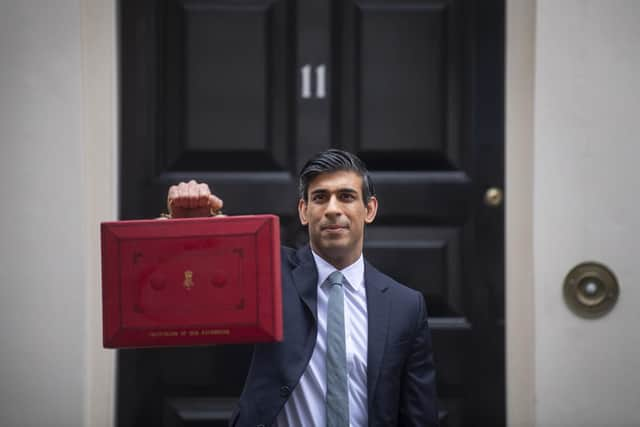Minimum Wage 2021: new UK rates revealed in budget explained, will it increase – and how much is it currently?
and live on Freeview channel 276
Protecting the jobs and livelihoods of the British people was at the centre of Rishi Sunak’s 2021 Budget - but what does that mean for the country’s workforce?
The chancellor has poured billions of pounds into various initiatives, such as the furlough scheme, to maintain businesses and prevent mass redundancies amid the Covid pandemic.
Advertisement
Hide AdAdvertisement
Hide AdMr Sunak, speaking in the House of Commons, pledged even more support over the coming months as the UK emerges from the coronavirus crisis which has spread over the world.


And, as part of that package, he has looked at the basic rate workers can expect to earn per hour. Here’s what you need to know.
What is the current minimum wage?
The minimum wage is the basic hourly rate employees can expect to be paid for their services.
The rate of pay steadily increases from the age of 16 through four different bands before reaching the top tier of 23 year-olds and over.
Advertisement
Hide AdAdvertisement
Hide AdThe top rate of minimum wage was previously only available for workers aged 25 and over - this has been changed to those aged 23 and over from April 2021.
| Current minimum wage rates per hour: Apprentices - £4.15 16-17 - £4.55 18-20 - £6.45 21-23 - £8.20 23 and over - £8.72 |
How does it compare to the national living wage?
The national living wage is what the government calls the basic rate of pay for workers in the top tier, who will be aged 23 and over from April 2021.
This is different to the UK living wage and the London living wage, which are both voluntary pay benchmarks employers can sign up to - though not legally required.
Advertisement
Hide AdAdvertisement
Hide AdThe living wage works out a fair minimum rate of pay based on the costs of everyday needs, like food, rent and including utility bills.
The Living Wage Foundation, an independent organisation, which assesses the minimum wage required to live off says the UK’s real living wage is £9.50, or £10.85 for London.
Is the minimum wage going up in 2021?
Mr Sunak confirmed the national minimum wage and the national living wage will increase for the 2021/22 financial year, during his Budget delivery.
The new rates will see an hourly increase of 19p for the majority of workers in the top tier, with 23 and 24 year-olds benefitting from a 71p jump from April 2021.
Advertisement
Hide AdAdvertisement
Hide AdThe overall increases will benefit “around two million people”, Mr Sunak said.
| 2021/22 minimum wage rates per hour: Apprentices - £4.30 16-17 - £4.62 18-20 - £6.56 21-23 - £8.36 23 and over - £8.91 |
What has been the response to the minimum wage increase?
Though any increase in pay tends to be welcomed by workers, unions claim the bump doesn’t go far enough.
The Trades Union Congress said: “Workers on the national minimum wage - not least the two million who are key workers - have been let down by the Government's decision to row back on the full planned rise they were promised.”